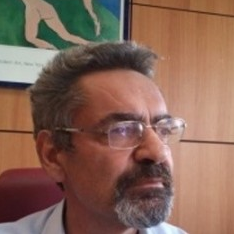Challenges Towards Sustainable Energy
A special issue of Energies (ISSN 1996-1073). This special issue belongs to the section "A: Sustainable Energy".
Deadline for manuscript submissions: closed (31 July 2020) | Viewed by 21763
Special Issue Editors
Interests: energy quality; energy and buildings; energy and environmental indicators; renewable energy systems; sustainable energy systems; engineering education
Special Issues, Collections and Topics in MDPI journals
Interests: artificial intelligence; demand response; electric vehicles; electricity markets; power and energy systems; renewable and sustainable energy; smart grids
Special Issues, Collections and Topics in MDPI journals
Interests: renewable energy technologies; engineering thermodynamics; thermal engineering; power generation
Special Issues, Collections and Topics in MDPI journals
Interests: thermochemical conversion processes; biochar production; fluidized bed reactors engineering; solid waste treatment technology; treatment of gaseous emissions; environmental impact of energy conversion processes
Special Issues, Collections and Topics in MDPI journals
Interests: energy policy and regulation; energy economics; energy markets; energy demand and supply; consumer behaviour; eco-innovation; sustainability
Special Issues, Collections and Topics in MDPI journals
Interests: Heat Transfer; Thermal Simulation; Energy Management System; Climetization
Special Issues, Collections and Topics in MDPI journals
Interests: biodiesel; bioethanol; biorefinery; energy storage systems; microalgae biorefineries; sustainable energy systems; waste valorization; wastewater treatment; waste-to-energy
Special Issues, Collections and Topics in MDPI journals
Special Issue Information
Dear Colleagues,
Energy has assumed such an important role that it is increasingly seen as a vital civilization issue. Indeed, the existence of humanity does not seem to be possible while dependent only on natural forms of energy. The production and use of energy in a sustainable way is still a mirage, regardless of the evident research efforts and political objectives. The undeniable reality is that much of the energy currently used around the world is still based on fossil resources (oil and coal), although renewable energy has increased significantly. The use of renewable energy at an increasingly large scale presents huge challenges. This is a complex multidisciplinary problem that encloses the paradigm of energy generation. Challenges include a chain of social stakeholders ranging from the teaching/learning partners to integrated solution providers. In this new scenario, it is necessary to ensure the reliability and efficiency required at various levels of scalability. Energy storage systems and active demand side participation are increasingly needed; with efficient use of available energy, demand flexibility must be intelligently used to compensate for the intermittency of renewable energy sources, such as wind and sun. In this chain context, the circular economy vision is increasingly important because it is a model that is close to the functioning of nature. Therefore, this Special Edition aims to contribute to the "Challenges Towards Sustainable Energy" agenda through scientific development to improve the global and multidisciplinary performance of modern energy systems.
We invite authors to submit articles on innovative technical developments, reviews, case studies, analyses, and evaluations from different disciplines that are relevant to the existing challenges related to sustainable energy. These include smart grids, renewable energy, energy storage systems and materials, life cycle analysis of energy (systems), zero-energy buildings, energy efficiency, (novel) electric and hybrid vehicles, financial and economic analysis, intelligent systems, energy and big data, energy policy, novel energy sources, and renewable-based generation, among others.
Prof. Dr. Carlos Felgueiras
Prof. Dr. Zita A. Vale
Prof. Dr. Coriolano Salvini
Prof. Dr. Luis Tarelho
Prof. Dr. Marta Ferreira Dias
Prof. Dr. Nelson Martins
Prof. Dr. Nídia Caetano
Guest Editors
Manuscript Submission Information
Manuscripts should be submitted online at www.mdpi.com by registering and logging in to this website. Once you are registered, click here to go to the submission form. Manuscripts can be submitted until the deadline. All submissions that pass pre-check are peer-reviewed. Accepted papers will be published continuously in the journal (as soon as accepted) and will be listed together on the special issue website. Research articles, review articles as well as short communications are invited. For planned papers, a title and short abstract (about 100 words) can be sent to the Editorial Office for announcement on this website.
Submitted manuscripts should not have been published previously, nor be under consideration for publication elsewhere (except conference proceedings papers). All manuscripts are thoroughly refereed through a single-blind peer-review process. A guide for authors and other relevant information for submission of manuscripts is available on the Instructions for Authors page. Energies is an international peer-reviewed open access semimonthly journal published by MDPI.
Please visit the Instructions for Authors page before submitting a manuscript. The Article Processing Charge (APC) for publication in this open access journal is 2600 CHF (Swiss Francs). Submitted papers should be well formatted and use good English. Authors may use MDPI's English editing service prior to publication or during author revisions.
Keywords
- Battery design and project
- Biofuels as liquid carriers of energy
- Distributed generation
- Energy policy
- Energy storage and transportation
- Energy storage integration in renewable Energy systems
- Energy storage systems
- Energy systems integration
- Fuel cells
- Hydrogen or methane as energy carriers
- Information management
- Information management, financial and economic analysis of energy storage systems
- Integration of storage energy storage systems in sustainable buildings
- Life cycle analysis of energy storage systems
- Novel batteries
- Novel energy sources
- Optimization
- Phase change materials
- Pumped-hydro energy storage
- PV and energy storage systems
- Renewable based mobility
- Smart grids and energy systems
- Thermal energy storage











